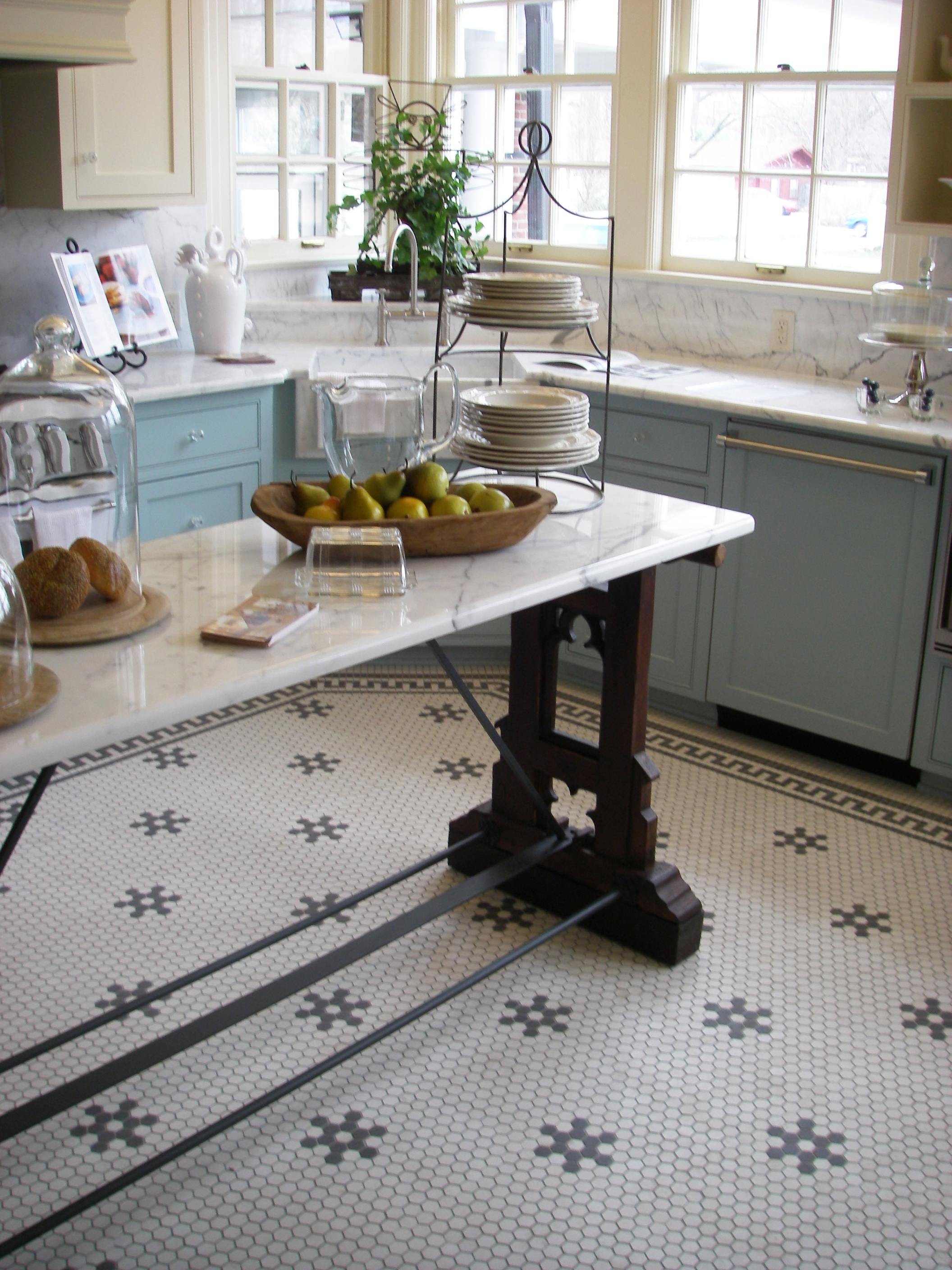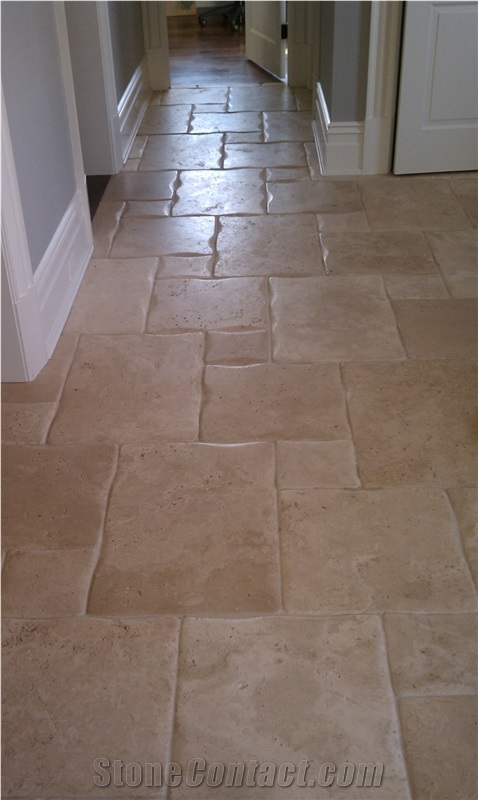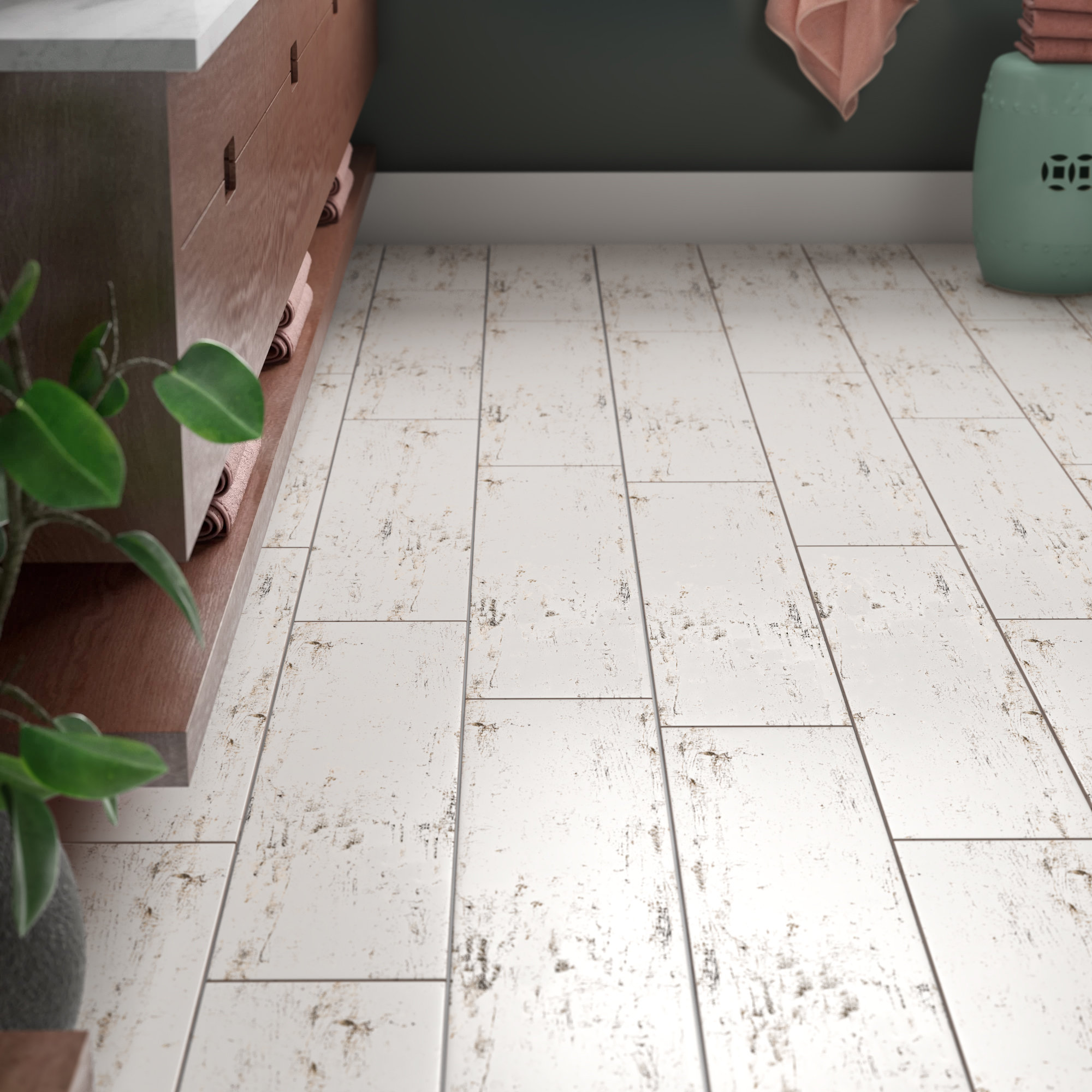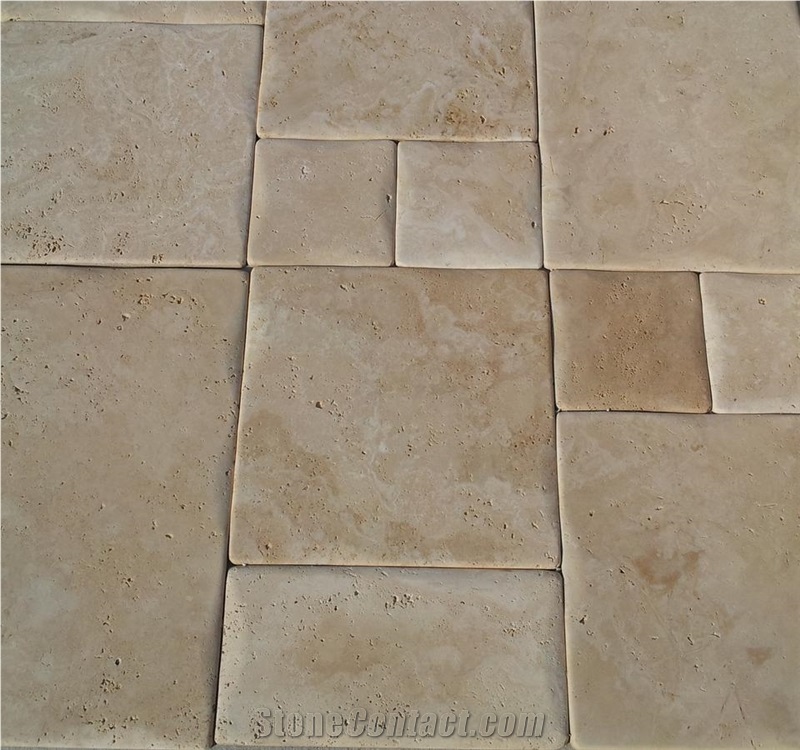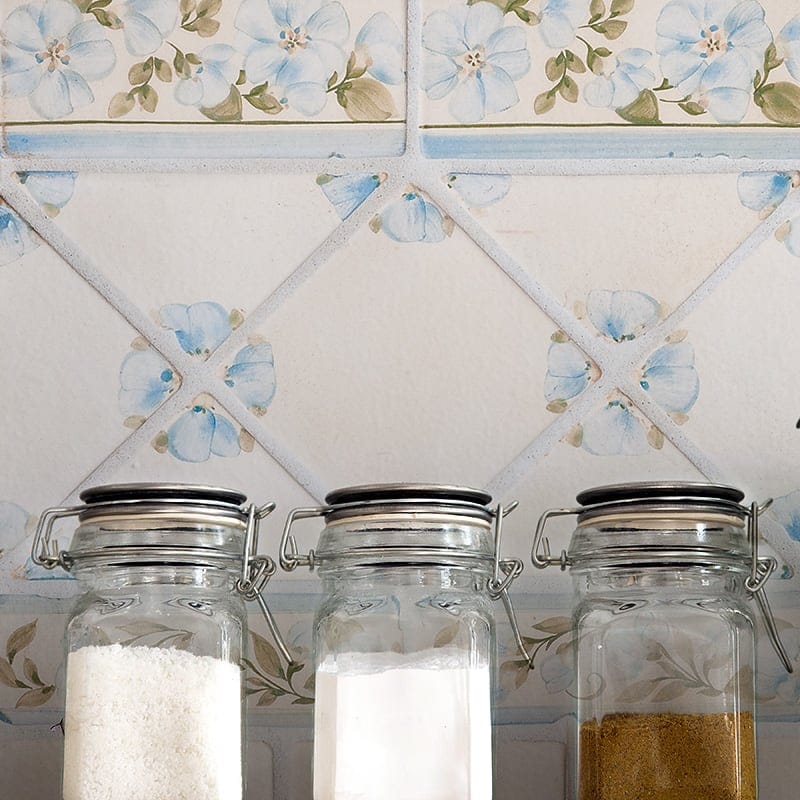Timeless Tradition: The History of Old World Tile Flooring
Step back in time and explore the rich history of old-world tile flooring, a tradition that has spanned centuries and continents. From the ancient civilizations of Mesopotamia to the grand palaces of Europe, the art of tile-making has left an indelible mark on human culture and architecture. Let’s journey through the annals of history to uncover the origins and evolution of this timeless tradition.
- Ancient Origins: The history of old world tile flooring can be traced back to the cradle of civilization in ancient Mesopotamia, where early artisans crafted simple clay tiles to pave the floors of their homes and temples. These rudimentary tiles, fired in kilns and adorned with geometric patterns, laid the foundation for the intricate tile work that would later flourish in civilizations across the globe.
- Majestic Mosaics of Rome: Perhaps the most iconic example of old world tile flooring can be found in ancient Rome, where mosaic artisans elevated tile craftsmanship to new heights of artistry and sophistication. From the grand villas of wealthy patricians to the public baths and forums frequented by the masses, mosaic tile floors adorned every corner of the empire. These intricate designs, made from colorful tesserae (small pieces of stone, glass, or ceramic), depicted scenes from mythology, nature, and everyday life, showcasing the boundless creativity of Roman artisans.
- Islamic Intricacy: During the medieval period, the Islamic world became a hub of tile production, with master craftsmen creating stunning geometric patterns and arabesques that adorned the walls and floors of mosques, palaces, and madrasas. These intricate tile designs, characterized by their mathematical precision and symmetrical beauty, reflected the Islamic principles of unity, order, and harmony. From the Alhambra in Spain to the Blue Mosque in Istanbul, Islamic tile work left an indelible imprint on the architectural landscape of the Old World.
- Renaissance Revival: With the dawn of the Renaissance in Europe, there was a renewed interest in classical art and architecture, leading to a revival of old world tile flooring techniques. Italian craftsmen rediscovered the ancient art of terracotta and marble tile-making, creating exquisite designs inspired by Roman and Greek motifs. These lavish tile floors became a symbol of wealth and prestige, adorning the palaces, churches, and public buildings of Renaissance Italy.
- Colonial Convergence: As European explorers ventured into the New World, they brought with them the tradition of old-world tile flooring, which soon found its way into the colonial architecture of Latin America. Spanish settlers introduced vibrant ceramic tiles known as “azulejos,” which adorned the facades and interiors of colonial churches, haciendas, and government buildings. These colorful tiles, often featuring intricate floral and geometric patterns, reflected the cultural fusion of the Old and New Worlds, blending European craftsmanship with indigenous influences.
- Modern Resurgence: Today, the legacy of old-world tile flooring lives on in homes, restaurants, and public spaces around the world. While traditional materials such as terracotta, marble, and ceramic continue to be popular choices, modern advancements in technology have expanded the possibilities for tile design and production. From digitally printed porcelain tiles that mimic the look of natural stone to eco-friendly recycled glass tiles, homeowners and designers have a vast array of options to choose from when incorporating old world charm into contemporary spaces.

The Craftsmanship Behind Old World Tile Flooring
Now, let’s talk more about old-world tile flooring and uncover the secrets of its craftsmanship, where time-honored techniques and natural materials converge to create timeless beauty. From the clay pits of ancient Mesopotamia to the kilns of Renaissance Italy, the materials and methods used in tile-making have remained remarkably consistent across cultures and centuries. Let’s discuss the key materials and techniques that define the art of old world tile flooring.
Clay: The Foundation of Tradition: At the heart of old-world tile flooring lies clay, a versatile and abundant natural material that has been used for millennia to create durable and beautiful tiles. Clay is extracted from the earth, then mixed with water, shaped into tiles, and fired in a kiln to harden and strengthen. Depending on the desired characteristics of the finished tile, different types of clay may be used, ranging from terracotta to porcelain. The rich earthy tones and organic textures of clay tiles add warmth and character to any space, making them a perennial favorite among homeowners and designers alike.
Stone: A Touch of Timelessness: In addition to clay, natural stone has long been prized for its durability and aesthetic appeal in old-world tile flooring. From marble and granite to limestone and slate, stone tiles offer a timeless elegance that transcends trends and fads. Quarried from the earth’s crust and cut into slabs or tiles, the stone is renowned for its unique veining, color variations, and inherent strength. Whether polished to a high sheen or left in its natural state, stone tiles lend a sense of luxury and sophistication to both indoor and outdoor spaces.
Ceramic: The Art of Fire and Glaze: Ceramic tiles, made from clay that is fired at high temperatures, are among the most versatile and widely used materials in old world tile flooring. The firing process not only hardens the clay but also allows for the application of colorful glazes and decorative patterns. From hand-painted tiles with intricate designs to mass-produced tiles with uniform finishes, ceramic tiles offer endless possibilities for customization and creativity. Their affordability, durability, and ease of maintenance make them a popular choice for kitchens, bathrooms, and other high-traffic areas.
Mosaic: The Art of Precision and Patience: Mosaic tile work, characterized by its small, carefully arranged pieces, requires meticulous attention to detail and a steady hand. Whether made from glass, stone, ceramic, or other materials, mosaic tiles are painstakingly arranged to form intricate patterns, images, and designs. The process of cutting, shaping, and setting each tile requires precision and patience, resulting in stunning works of art that can adorn floors, walls, and ceilings. From ancient Roman villas to modern-day spas and hotels, mosaic tile floors continue to captivate with their beauty and craftsmanship.
Handcraftsmanship vs. Modern Production: While traditional handcrafted techniques still play a vital role in old-world tile flooring, modern production methods have introduced new possibilities for innovation and efficiency. Advances in technology, such as computer-aided design (CAD) and digital printing, have made it easier to replicate intricate patterns and designs on a mass scale. Additionally, the use of recycled materials and eco-friendly manufacturing processes has made old world tile flooring more sustainable than ever before. Whether produced by skilled artisans or manufactured in state-of-the-art factories, old-world tile flooring continues to uphold the tradition of craftsmanship and quality that has defined it for centuries.
The Aesthetic Appeal of Old World Tile Patterns and Designs
Step into a world of timeless beauty and understated elegance with old world tile patterns and designs that have captivated imaginations for centuries. From the intricate arabesques of Islamic tile work to the geometric motifs of Renaissance mosaics, the aesthetic appeal of old world tile flooring lies in its ability to evoke a sense of history, culture, and craftsmanship. Let’s discuss some of the most iconic patterns and designs that have defined the art of old world tile flooring.
Geometric Symmetry: One of the defining characteristics of old-world tile patterns is their use of geometric shapes and symmetrical arrangements. Whether inspired by Islamic geometry or Renaissance mathematics, these intricate patterns are designed to create a sense of order, harmony, and balance. From simple checkerboard designs to elaborate tessellations, geometric tiles add visual interest and depth to any space, whether traditional or contemporary in style.
Floral Motifs: Flowers have long been a popular motif in old world tile designs, symbolizing beauty, growth, and renewal. From delicate petals and leaves to bold botanicals and vines, floral patterns add a touch of natural elegance to floors, walls, and ceilings. Whether rendered in earthy terracotta tones or vibrant glazed ceramics, floral tiles bring a sense of the outdoors inside, infusing spaces with warmth and vitality.
Arabesque Elegance: Inspired by the intricate scrollwork of Islamic art and architecture, arabesque tiles feature flowing lines, interlocking curves, and ornate motifs that create a sense of fluidity and movement. These mesmerizing patterns, often seen in the palaces and mosques of the Middle East, evoke a sense of exoticism and sophistication. Whether rendered in muted earth tones or vibrant jewel tones, arabesque tiles add a touch of timeless elegance to any interior.
Renaissance Revival: During the Renaissance period in Europe, old world tile flooring experienced a revival of classical motifs and themes, drawing inspiration from ancient Roman and Greek designs. From mythological scenes and allegorical figures to intricate scrollwork and architectural details, Renaissance tiles were a celebration of humanism, scholarship, and artistic expression. Today, these timeless designs continue to grace the floors of historic palaces, museums, and churches, reminding us of a bygone era of beauty and creativity.
Moroccan Magic: In the vibrant markets and riads of Morocco, old-world tile flooring takes on a life of its own with the colorful and eclectic patterns of Moroccan zellige tiles. These handcrafted tiles, made from encaustic cement or glazed ceramic, feature geometric patterns, arabesques, and floral motifs that reflect the cultural diversity and artistic heritage of the region. Whether adorning the floors of traditional courtyards or modern-day interiors, Moroccan tiles infuse spaces with a sense of exoticism and charm.
Modern Interpretations: While traditional patterns and designs continue to inspire, modern interpretations of old world tile flooring offer a fresh perspective on this timeless art form. From minimalist monochrome schemes to bold and eclectic mashups, designers are pushing the boundaries of tradition with innovative new patterns, materials, and techniques. Whether incorporating vintage tiles into contemporary spaces or reimagining classic motifs for a modern audience, the charm and character of old-world tile flooring remain as relevant today as ever before.
Why Old World Tile Flooring Stands the Test of Time
Discover the secret behind the enduring popularity of old world tile flooring as we explore its unmatched durability and ease of maintenance. From the rugged terracotta floors of Tuscan farmhouses to the polished marble halls of grand palaces, old-world tiles have withstood the rigors of time and usage, proving themselves to be a practical and long-lasting flooring option. Let’s find out the reasons why old world tile flooring stands the test of time.
Natural Strength: One of the primary reasons for the durability of old-world tile flooring lies in the natural strength and resilience of its materials. Whether made from clay, stone, or ceramic, these tiles are fired at high temperatures to create a dense and durable surface that can withstand heavy foot traffic, moisture, and wear. Unlike softer flooring materials such as wood or carpet, old world tiles are resistant to scratches, stains, and fading, making them ideal for high-traffic areas such as kitchens, bathrooms, and entryways.
Timeless Beauty: In addition to their durability, old-world tiles are prized for their timeless beauty and enduring appeal. Unlike trendy flooring materials that come and go with fads, the classic elegance of old world tiles transcends time and style, making them a wise investment for homeowners and designers alike. Whether adorned with intricate patterns or left in their natural state, old world tiles add a touch of sophistication and charm to any space, enhancing its aesthetic appeal and resale value.
Ease of Maintenance: Another advantage of old-world tile flooring is its ease of maintenance and care. Unlike carpet, which requires regular vacuuming and deep cleaning to remove dirt and stains, old world tiles can be easily swept, mopped, or wiped clean with a damp cloth. For stubborn stains or grime, mild cleaning solutions and gentle scrubbing are usually all that’s needed to restore the tiles to their original luster. With proper care and maintenance, old-world tile floors can retain their beauty and durability for decades, requiring minimal upkeep and expense.
Versatility and Adaptability: Old world tile flooring is also prized for its versatility and adaptability to a wide range of design styles and settings. Whether decorating a rustic farmhouse, a modern loft, or a historic mansion, there’s a type of old-world tile to suit every taste and aesthetic preference. From the earthy warmth of terracotta to the timeless elegance of marble, old world tiles offer endless possibilities for customization and creativity, allowing homeowners and designers to create unique and personalized spaces that reflect their tastes and lifestyles.
Environmentally Friendly: In an era of increasing environmental awareness, old world tile flooring offers a sustainable and eco-friendly alternative to synthetic flooring materials. Made from natural materials such as clay, stone, and ceramic, old world tiles are non-toxic, recyclable, and biodegradable, making them an environmentally responsible choice for eco-conscious consumers. Additionally, the longevity of old world tile floors means less frequent replacement, reducing the overall environmental impact and carbon footprint of the flooring industry.
Investment Value: Beyond their practical benefits, old-world tile flooring can also provide a solid return on investment for homeowners. Unlike cheaper flooring options that may need to be replaced every few years due to wear and tear, old world tiles can last a lifetime with proper care and maintenance, adding long-term value to your home. Whether you’re renovating for resale or planning to enjoy your home for years to come, old world tile flooring is a wise investment that pays dividends in both durability and beauty.
Incorporating Old World Tile Flooring in Contemporary Design Trends
Embrace the timeless allure of old world tile flooring and discover how to incorporate this classic element into modern design trends. From sleek minimalist interiors to eclectic bohemian spaces, old-world tiles add a touch of warmth, character, and sophistication to any style. Let’s explore some innovative ways to bring the charm of old world tile flooring into contemporary settings.
Mix and Match: One of the key trends in modern design is the art of mixing and matching different materials, textures, and styles to create eclectic and personalized spaces. Incorporating old-world tile flooring into this mix allows you to add a touch of timeless elegance and character to your home, while still maintaining a fresh and contemporary aesthetic. For example, pair rustic terracotta tiles with sleek stainless steel appliances in a modern kitchen, or juxtapose classic marble floors with industrial-style furniture in a loft apartment.
Feature Walls and Accents: Old world tiles are not just for floors—they can also be used to create stunning feature walls, backsplashes, and accents that serve as focal points in a room. Whether it’s a mosaic tile backsplash in a kitchen, a tiled accent wall in a bathroom, or a decorative tile border around a fireplace, old-world tiles add visual interest and texture to any space. Choose tiles with intricate patterns, bold colors, or metallic accents to make a statement and add drama to your interior design.
Pattern Play: Experiment with different patterns and layouts to create dynamic and visually striking effects with old world tile flooring. Whether it’s a classic herringbone pattern, a modern chevron design, or a whimsical patchwork of mixed tiles, playing with patterns allows you to express your creativity and personality in your home decor. Mix and match tiles of different shapes, sizes, and colors to create a one-of-a-kind look that reflects your individual style and taste.
Indoor-Outdoor Living: Extend the beauty of old-world tile flooring beyond the confines of your home and embrace the trend of indoor-outdoor living. Whether it’s a tiled patio, courtyard, or terrace, old world tiles are perfectly suited for outdoor spaces, offering durability, weather resistance, and timeless elegance. Choose natural stone tiles for a rustic Mediterranean vibe, or opt for glazed ceramic tiles for a pop of color and pattern in a modern garden setting. By blurring the boundaries between indoor and outdoor spaces, you can create a seamless flow of style and comfort throughout your home.
Customization and Personalization: With advances in technology and production methods, old world tile flooring offers endless possibilities for customization and personalization. From digitally printed tiles that replicate the look of hand-painted ceramics to laser-cut tiles that create intricate patterns and designs, modern manufacturing techniques allow you to create bespoke tile floors that reflect your unique style and taste. Work with a designer or tile manufacturer to create custom patterns, colors, and layouts that complement your interior decor and elevate your home design to new heights of sophistication.
Sustainable Solutions: As environmental concerns become increasingly important in modern design, old-world tile flooring offers a sustainable and eco-friendly solution for homeowners seeking to reduce their carbon footprint. Made from natural materials such as clay, stone, and ceramic, old world tiles are non-toxic, recyclable, and biodegradable, making them an environmentally responsible choice for eco-conscious consumers. Additionally, the longevity of old world tile floors means less frequent replacement, reducing the overall environmental impact and carbon footprint of the flooring industry.
Old World, Mediterranean, Italian, Spanish Tuscan Homes & Decor
Vintage 8″ x 36″ Porcelain Wood Look Wall & Floor Tile
Capturing the old-world style of Antique Stone Flooring
Give Your Flooring a Rustic Victorian Look
Old World Normandy Pillowed Travertine Floor Proje, Classic
Tile and Stone – Old World Floors
Antique Stone Tile Flooring
Old World Tile Collection
Related Posts:
